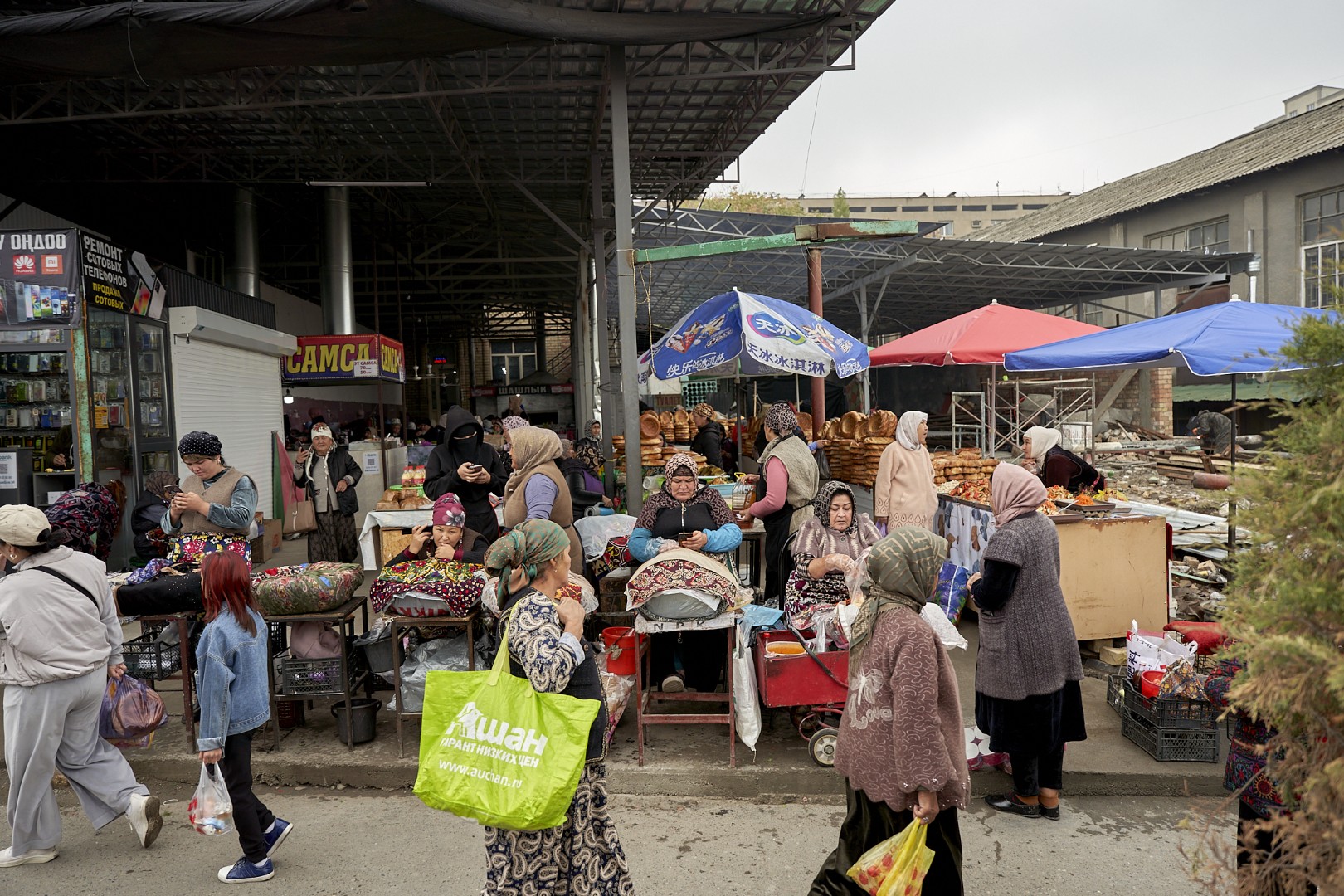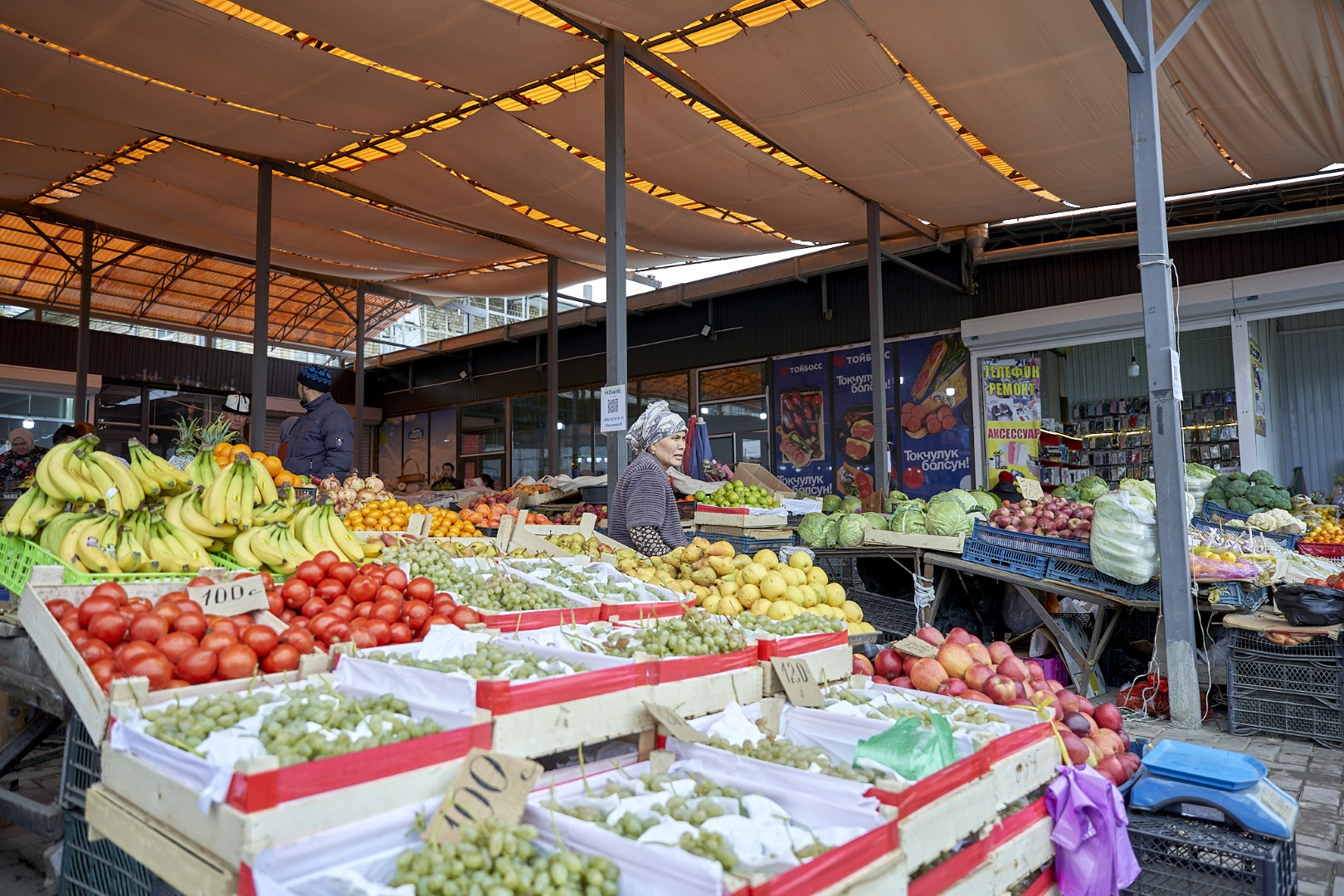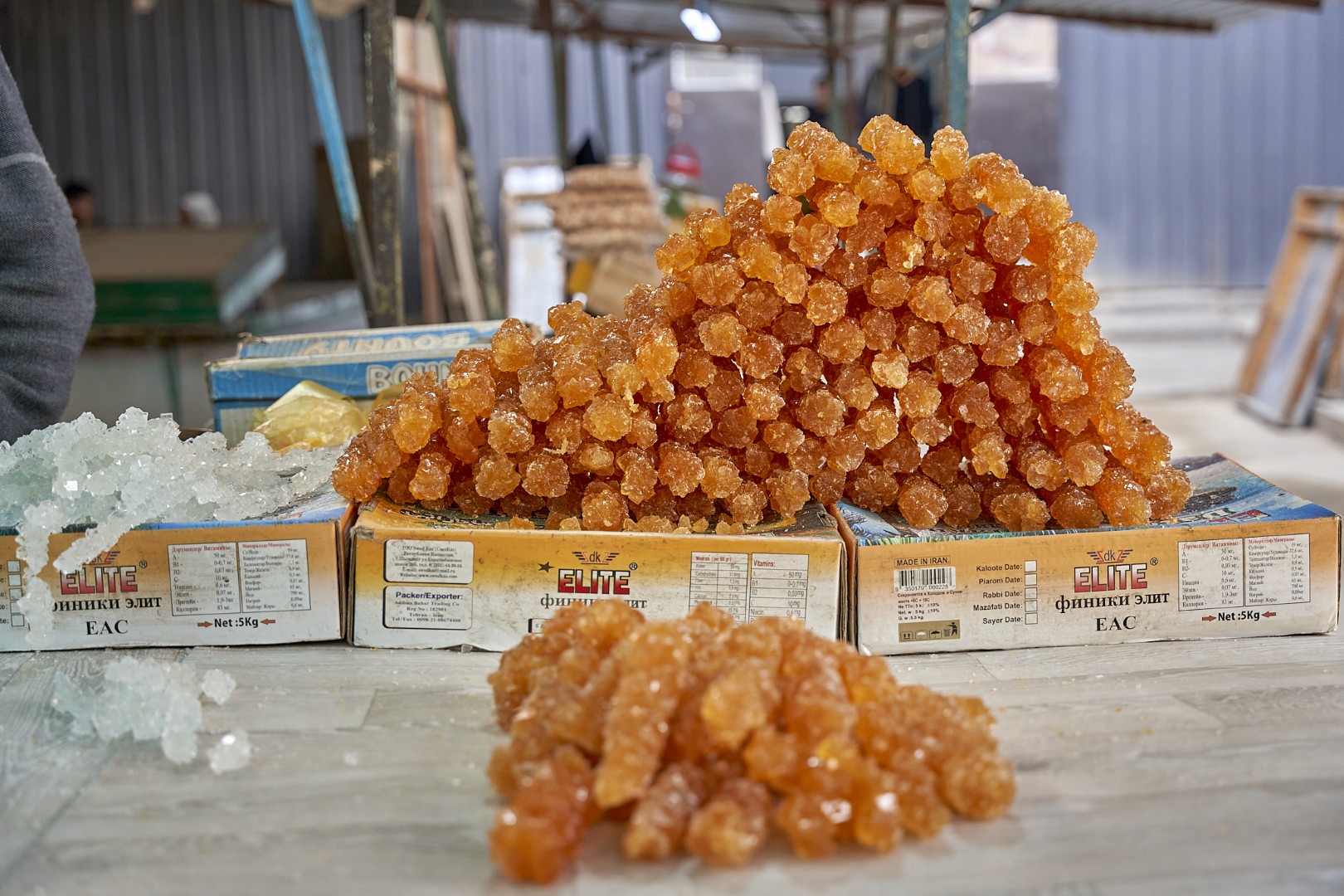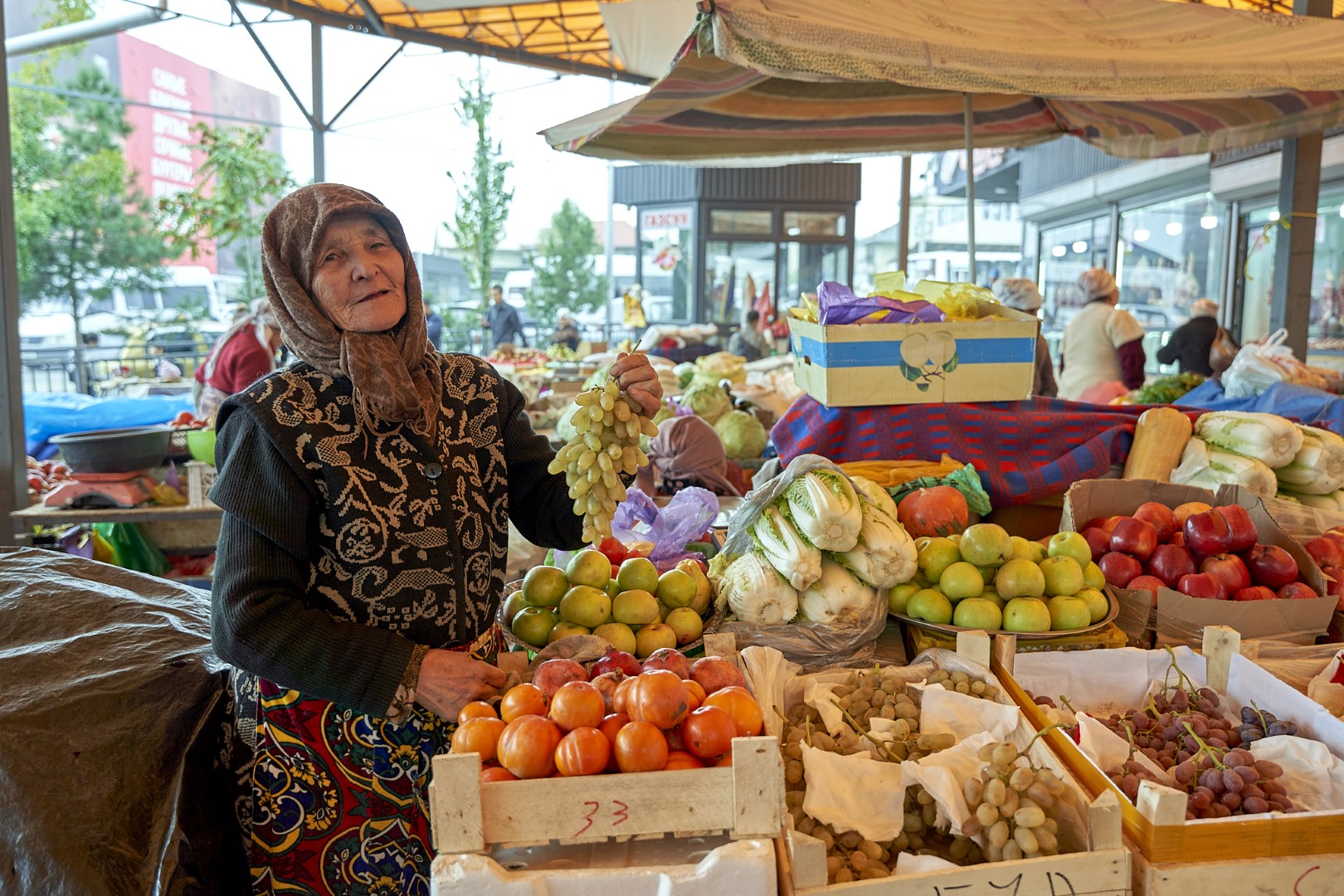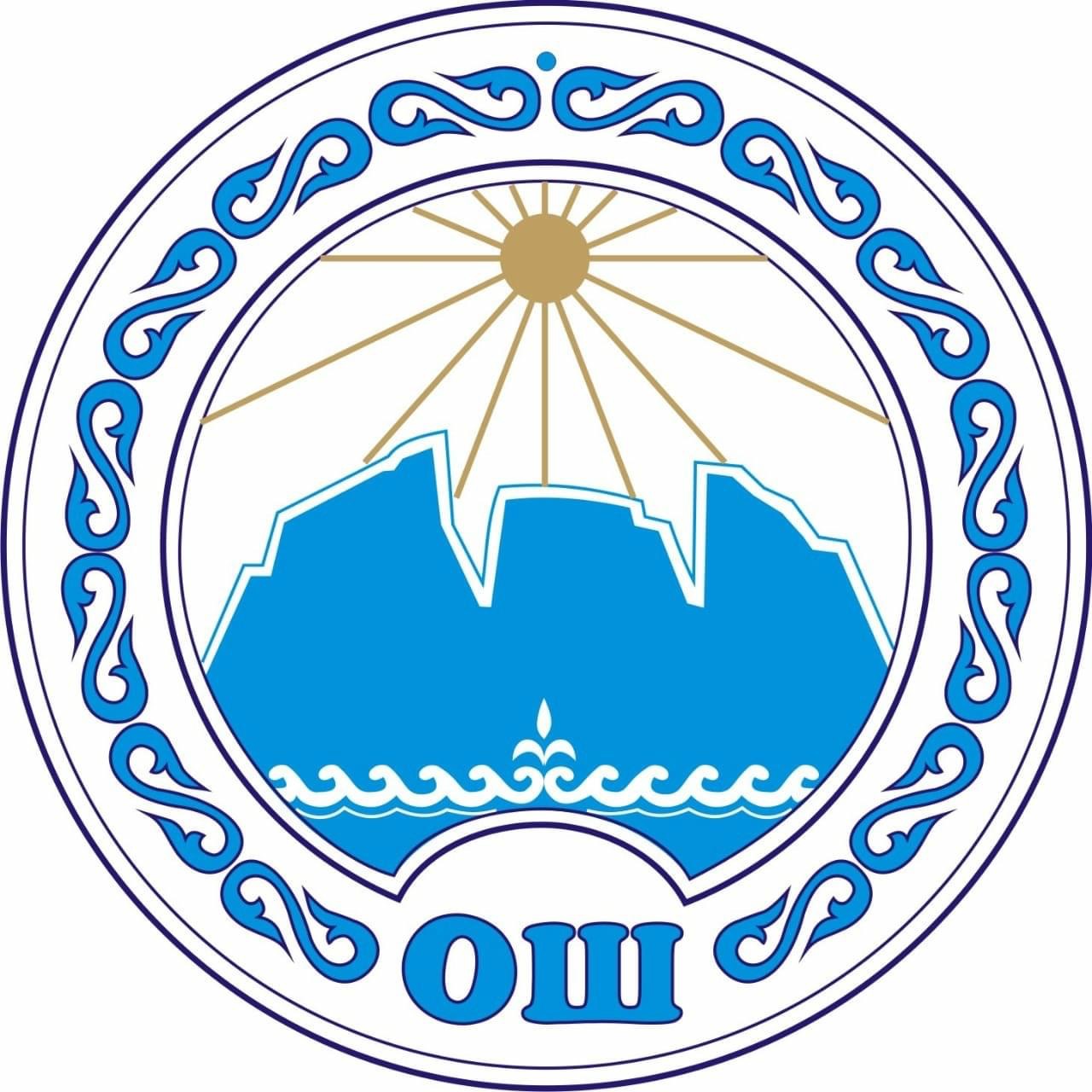

Entrance fee – no fee

10:00 – 16:00

No closing days
Add to My Tour
History of the Bazaar
Osh’s old bazaar dates back to the founding of the city, some three thousand years ago. Today, many of the smaller local bazaars have disappeared or changed locations, and only the old bazaar remains the same, at home on the banks of the Ak-Buura.
At the end of the 19th century, more than 8,000 people were engaged in cottage industries in local bazaars, and 4,600 people were regularly trading there. At the turn of the 20th century, the old bazaar already had 1,300 trading stalls. The turnover of the bazaar, together with other trading areas in Osh, amounted to several million roubles a year at pre-World War I exchange rates.
During the Soviet period, bazaars became part of a complex system of public-private relations. They became known as “kolkhoz markets,” after the collective farms that supplied them. They were divided into a food markets, mixed markets, where both agricultural products and manufactured goods were traded, and feed markets, where livestock, poultry and fodder for cattle were traded. The old bazaar in Osh was a mixed type of bazaar.
In 1986, the Osh bazaar had a trading area of about 12 hectares, which incorporated 1,750 trading stalls and 500 pavilions. The bazaar had its own storage room, six cold rooms for perishable products, and a 68-bed hotel. In the 1980s, the old bazaar was reconstructed, and a large arch was built at the main entrance, though today it is partially obscured behind the pavilions.
Despite all the external changes and alterations, the old bazaar is still a classic oriental bazaar that is divided inside into other mini-bazaars. Take a walk through it to experience the bright colors, unique flavors and variation of the old bazaar, which continues to welcome traders and shoppers just as it did a thousand years ago.

Locations Nearby
-

Altyn Bazaar
Start your walk around the old bazaar at one of the oldest passageways on Lenin Street, near the historical Sheyit-Tepe neighborhood. It is not visible…
-

Artisans
The old bazaar is famous for its artisans, who cherish and preserve the secrets of their handicrafts, and whose wares are still in demand among…
-

Blacksmiths’ Row
The blacksmiths’ row is situated on the bank of the Ak-Buura, in the most colourful part of the old bazaar, as it has been for…
-

History of the Bazaar
Osh’s old bazaar dates back to the founding of the city, some three thousand years ago. Today, many of the smaller local bazaars have disappeared…
Other Locations
-
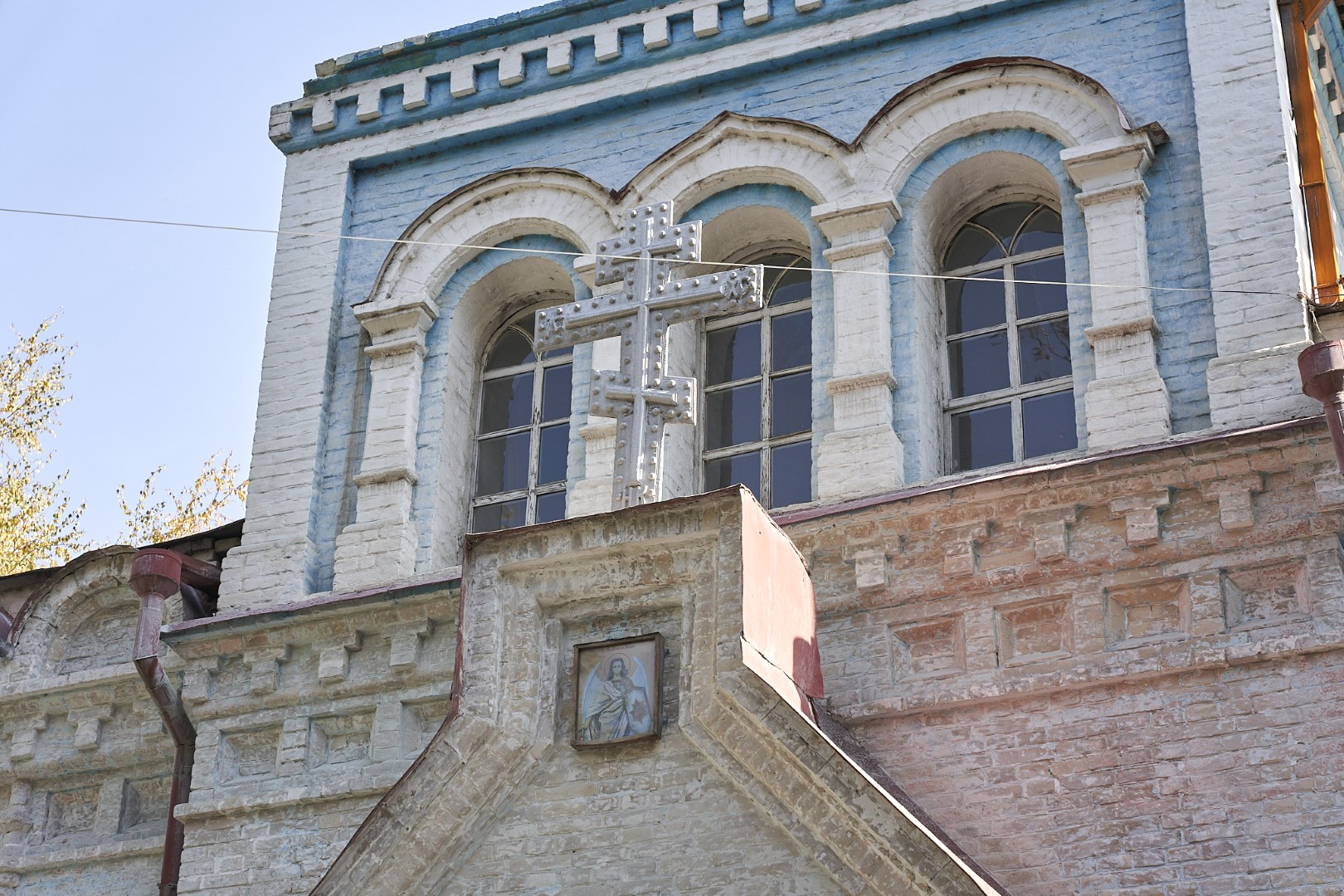
Russian Orthodox Church
St. Michael the Archangel Cathedral is the only remnant of Russian Orthodox architecture in Osh and was the central landmark around which the Slavic community…
-
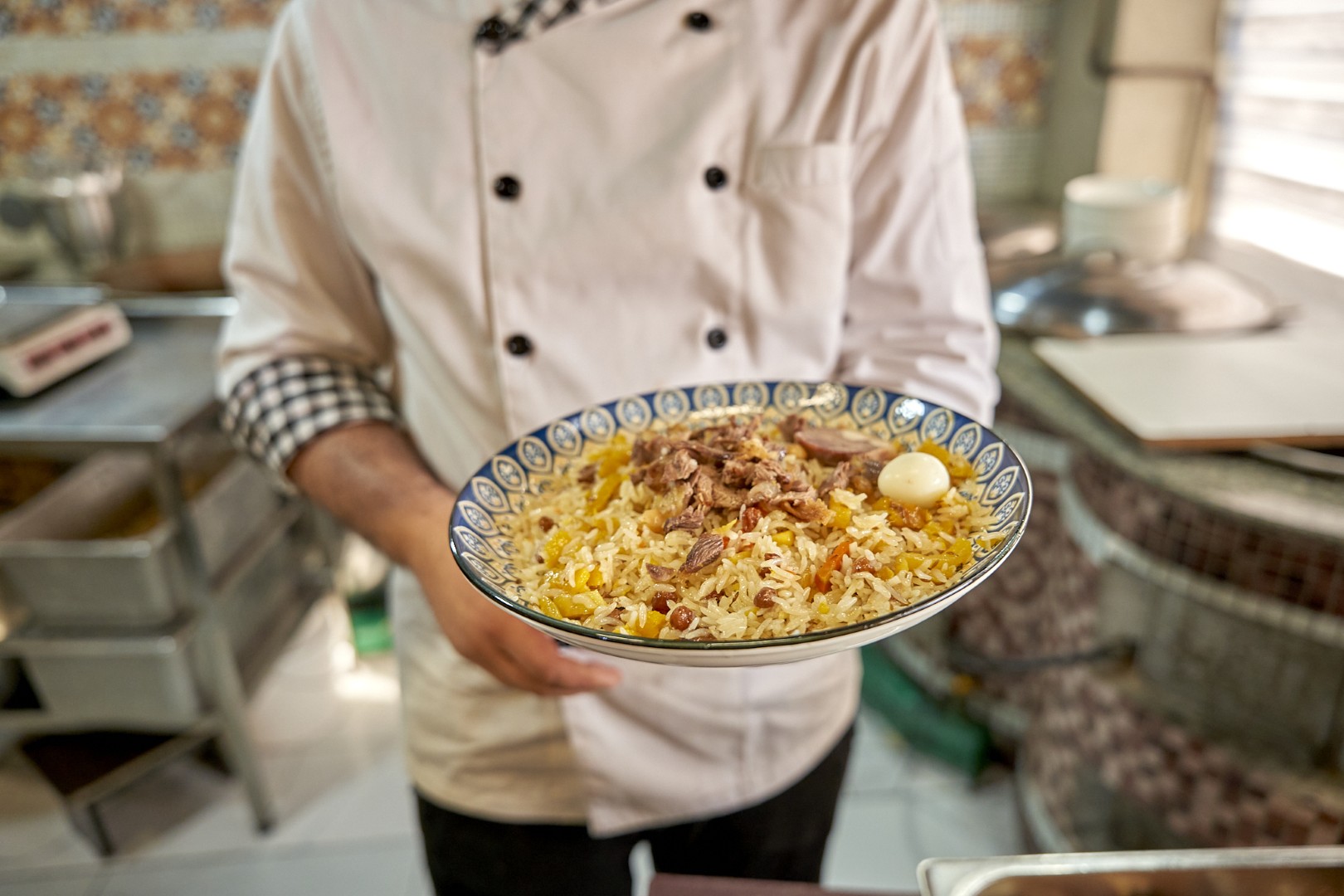
Osh Pilau
Pilau, or “ash” in Kyrgyz, is Osh’s signature dish! It’s probably no coincidence that the name of the city and of its most famous food…
-
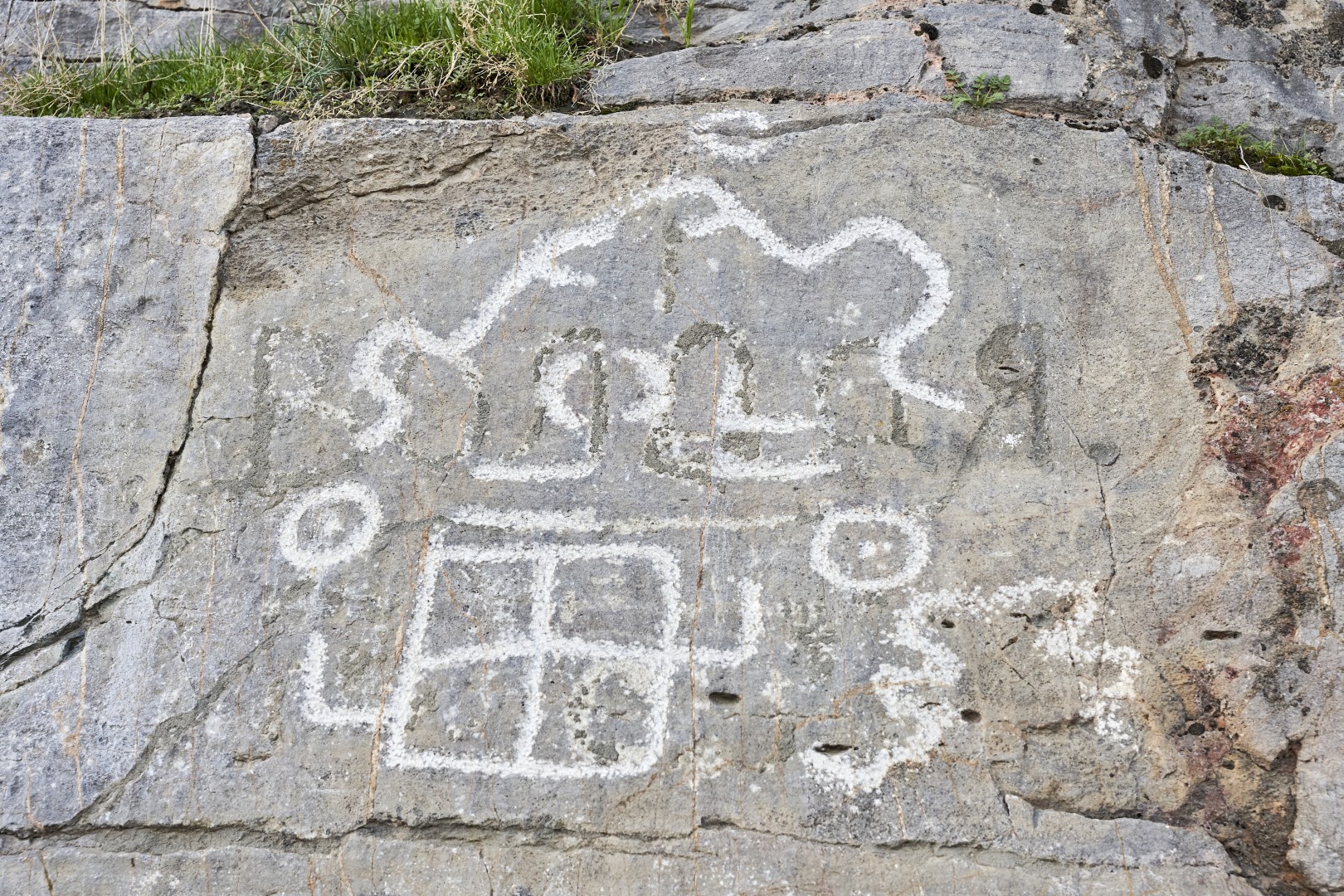
Rock Carvings
Petroglyphs, visual remnants of Osh’s millennia-old history, can be found almost everywhere on Suleiman Mountain. They are most numerous on the southern, eastern, southeastern and…
-
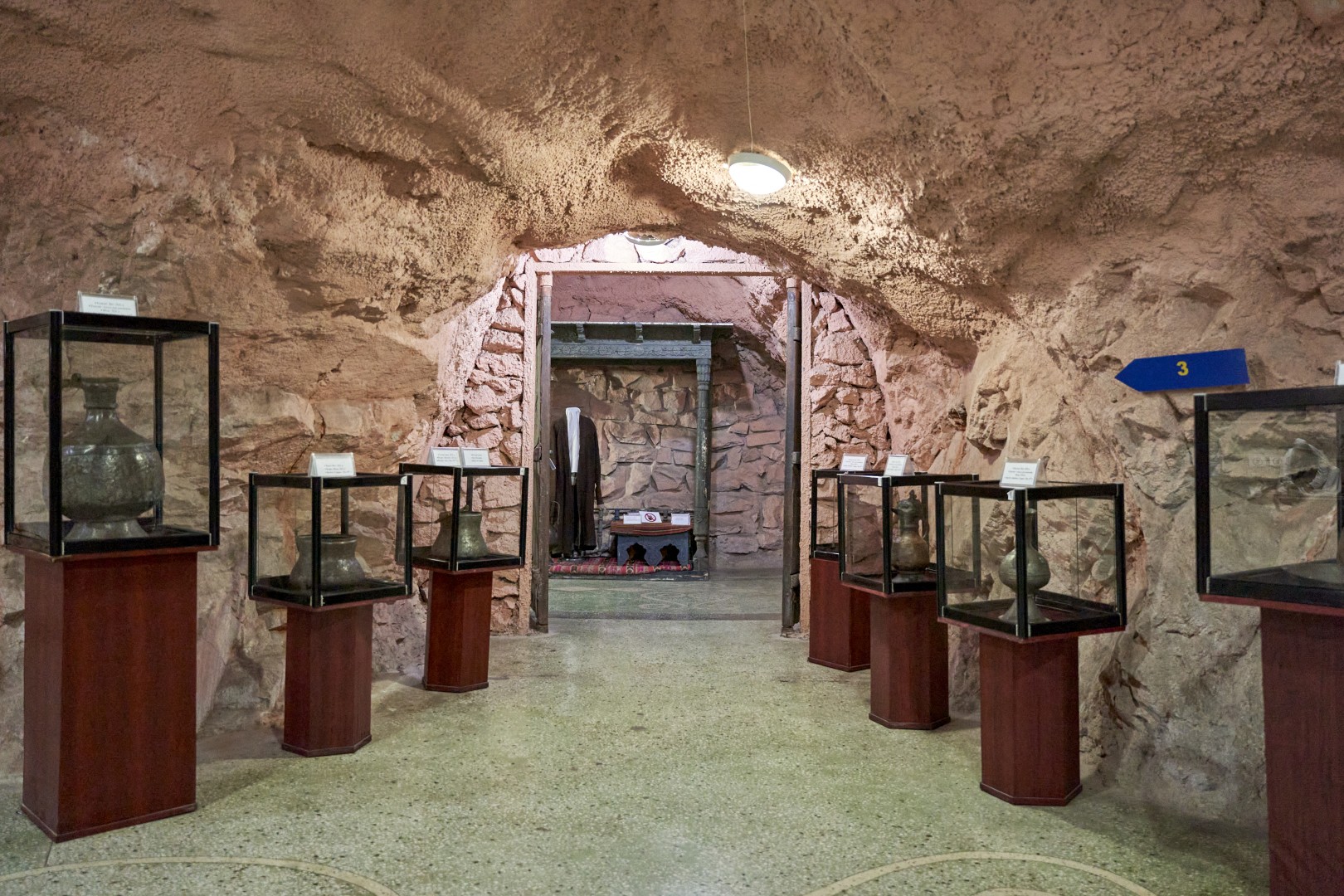
Museum in Rushan Cave
On a hot July day in 1978, the new Historical and Local History Museum of Osh, housed within a winding complex of 13 caves and…
